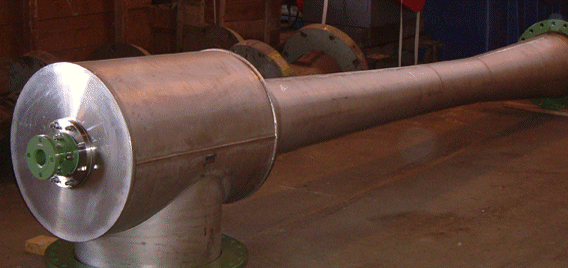Chemical and Process Engineering Resources

Where to Start
When a vacuum problem arises there are several preliminary checks that should be made on an ejector system before components are disassembled. First, is the system design data readily available? Most ejector systems are custom-designed to operate at a specified vacuum, given process loads, minimum available steam pressure, maximum steam temperature, maximum discharge pressure and maximum water temperature. It is impossible to evaluate the complete system unless the manufacturer's design parameters are known.
Once the design data are located, there is an ordered series of steps to take in isolating ejector problems. One should check:
- Gauges
- Steam
- Water
- Process loads
- Field report and process logs
Pay Attention to Instruments
When troubleshooting the ejector system, accurate pressure and temperature measurements are needed to quickly locate the source of the problem. Therefore, a check of the system's instrumentation is a necessity. All vacuum, pressure, and temperature gages should be calibrated or replaced. A malfunctioning vacuum gage may be found to be the entire vacuum "problem."
If the vacuum gage is several feet or more from the ejector system, check the line running from the system to the gage for air leakage. It would take a very small amount of air leakage in an instrument vacuum line to throw off the measurement. If leakage is suspected, connect the test gage directly to the ejector and compare vacuum measurements. If there is a valve in the vacuum line, close it and observe the vacuum line, close it and observe the vacuum gage. If it slowly loses vacuum, air leakage is occurring.

Typically, an absolute mercury manometer is used for measuring the vacuum in the Y and Z stages (Figure 2). It can be flooded with water and still give a relatively accurate reading.
Replacement mercury U-tubes are also inexpensive, and are available from various suppliers. Mercury-free units are also available, and are typically used for the higher-vacuum ejectors such as W or X stages. There are also many manufacturers of electronic vacuum gages that offer very accurate and portable instruments. The gages are well worth the investment and should be kept in stock only to be used when troubleshooting ejector systems.
Steam-pressure gages should be located on the steam chest of the ejectors or as close to the unit as possible. It is important to know the actual operating steam pressure since an ejector of critical-flow design (suction pressure less than half discharge pressure) will not operate properly when even a few psi below its design motive pressure. Compound steam pressure gages are recommended since they will not be damaged when exposed to vacuum.

 FB
FB

3 Comments
Excellent Article !
very informative article.. thnx
Additional information on the <air to steam mass ratio> for each pressure level or for a certain compression ratio would be greatly appreciated. There might be any calculation tool available on this subject, isn't it?
Tanks in advance.